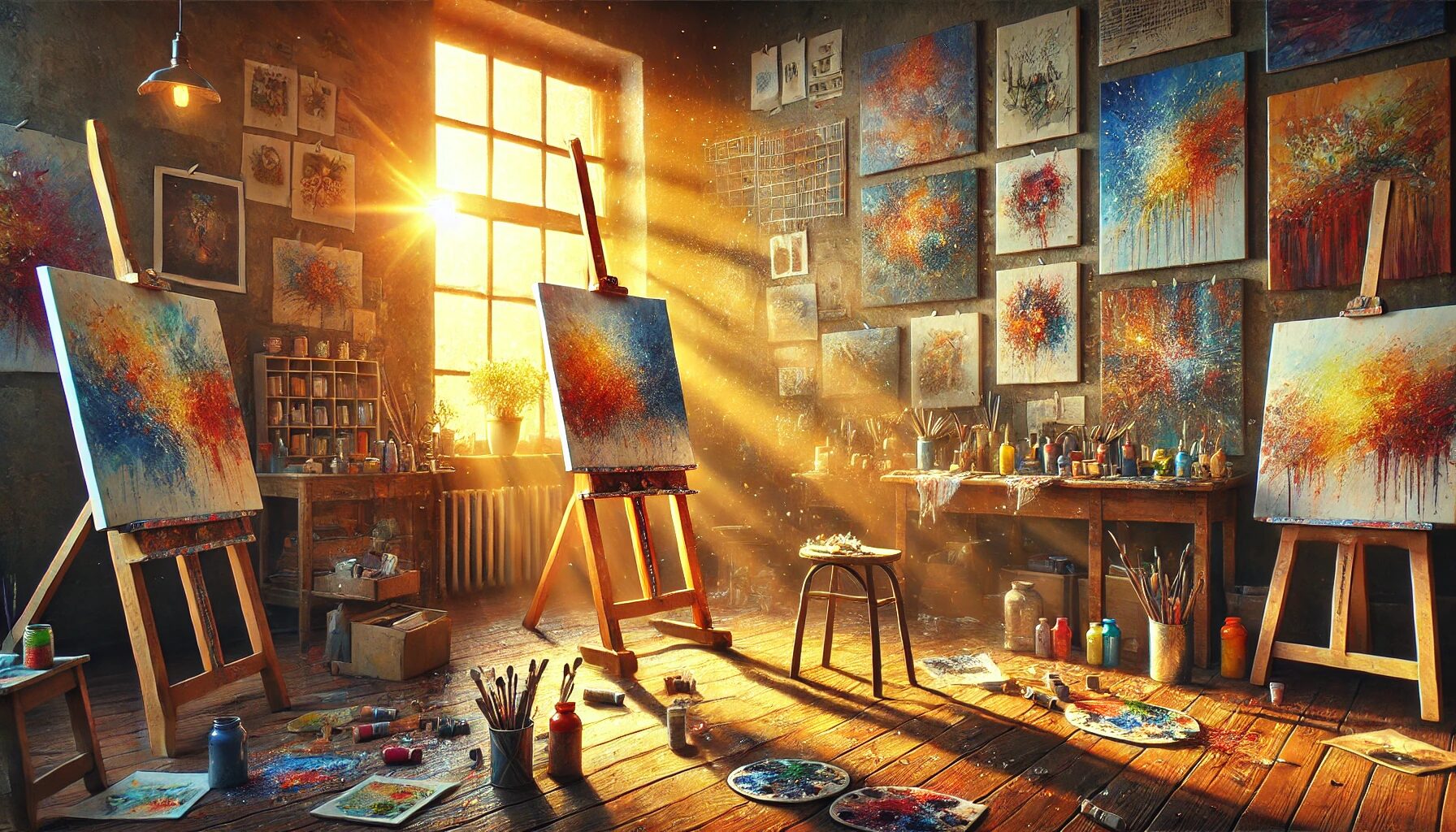
Hello everyone! Ever since I made the leap from a structured corporate job to a full-time artistic life, one of the questions I get asked the most is: “How do you stay motivated?” In the corporate world, there are regular performance reviews, clear milestones, and external markers of success. As an artist, motivation must often come from within. Today, I’d like to share how I keep my creative spark alive and continuously work on improving my craft—even without a strict corporate framework.
1. Setting My Own Structure
Leaving behind an office schedule doesn’t mean I’ve abandoned all structure; instead, I’ve created a schedule that aligns with my creative energy. Every morning, I set aside dedicated time for painting or sketching. By treating art like a priority appointment, I make it less likely for procrastination or distractions to derail me. These blocks of time also help me maintain a sense of routine and discipline—important for anyone transitioning from a rigid work environment to a more flexible lifestyle.
Tip: If you’re transitioning away from a 9-to-5, try creating a loose timetable. For example, 9–11 AM might be your core painting time, followed by administrative tasks or email after lunch. A schedule keeps you grounded and gives your day a sense of purpose.
2. Embracing Continuous Learning
One of the biggest motivators for me is the idea of always learning something new. Whether it’s experimenting with a new medium, taking an online art course, or reading a book on color theory, I thrive when I’m expanding my knowledge. Each skill I add to my toolkit becomes another avenue of creative expression.
Tip: Keep a “learning list” of techniques, materials, or topics you want to explore. When motivation wanes, pick an item from the list and dive in. Sometimes stepping outside your comfort zone is the best way to rekindle excitement.
3. Celebrating Small Wins
In a corporate job, you might get bonuses or promotions—clear evidence of growth. As an artist, progress is often more subtle. That’s why I’ve learned to celebrate small wins. Did I manage to paint for an hour every day this week? Did I finish a challenging commission? Did I finally conquer a tricky technique?
By recognizing these achievements, I give myself a moral boost and remind myself that I’m moving forward in my craft. Over time, these little celebrations add up to a sense of genuine progress and fulfillment.
4. Curating My Inspiration
When you work for yourself, burnout can creep in if you’re not careful. One way I keep my passion ignited is by seeking out fresh inspiration. I follow other artists whose styles resonate with me, browse museums (in-person or virtually), and explore nature or my local environment for new subject matter. Sometimes, I’ll switch up my playlist or experiment with a new subject or technique.
These small changes in scenery, routine, or style keep my artistic brain stimulated. And if I hit a creative block, I simply go back to my “inspiration well” to refuel.
5. Setting Personal Goals
While corporate life often has performance targets or project deadlines, I now create my own goals to stay motivated. It might be preparing for an upcoming exhibition, planning a new collection, or even aiming to master a certain painting technique by year-end. Goal-setting transforms abstract dreams into actionable steps, offering a sense of direction and accountability.
Tip: Write down your short-term and long-term art goals. Perhaps you want to finish three paintings by the end of the month or apply to a specific residency next year. Put these goals somewhere visible—like on a wall near your workspace—so you can see them daily.
6. Building a Support System
Just because I work alone doesn’t mean I’m isolated. I’ve found a nurturing support system by connecting with other artists and creative communities, both online and offline. We share our struggles, critique each other’s work, and celebrate milestones together.
Posting my latest pieces on Instagram (@daniellesiauw) and sharing progress updates on danielleart.co also encourages me to keep going. The positive feedback—and even constructive criticism—fuels my motivation and sense of belonging.
7. Accepting Ebbs and Flows
Not every day will be a creative powerhouse, and that’s okay. I’ve learned to show myself grace when I’m not feeling the muse. Sometimes, I’ll focus on administrative tasks like updating my website, organizing reference photos, or planning future projects. Other times, I step away from painting altogether and recharge with a walk in nature or a good book. Allowing myself these natural ebbs and flows helps prevent burnout and keeps me excited for the moments I do return to the canvas.
8. Reflecting on the Why
Finally, whenever my motivation dips, I return to the question: “Why did I choose this path?” I paint because it fulfills me in ways my structured corporate job never could. Every brushstroke is a chance to express my perspective, invite others into my world, and discover something new about myself. That sense of purpose is the ultimate motivator and reminds me that creative freedom, while challenging, is immeasurably rewarding.
Conclusion
Transitioning from a rigid corporate framework to the open realm of art has been a liberating yet challenging journey. Through personal goal-setting, continuous learning, and celebrating small wins, I’ve found ways to stay motivated and keep growing as an artist. I hope my experience offers some inspiration to those walking a similar path.
If you have questions or want to share your own motivation tips, feel free to drop a comment or message me on Instagram (@daniellesiauw). Your stories and support always encourage me to keep painting, learning, and dreaming.
Thank you for reading, and remember: staying motivated is a lifelong process—one colorful brushstroke at a time.

Leave a Reply